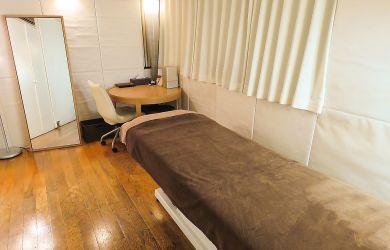
February 10, 2011
Catnap Culture
In a city that never sleeps, there always seems to be someone snoring
By Metropolis
Originally published on metropolis.co.jp on February 2011

Illustration by Eparama Tuibenau
“So, what did you do at the weekend, Mr. Sato?”
“I slept.”
“Okaaayy. Er …”
The young English conversation tutor gropes for another lead as he tries to remember how many times this flat reply has killed off his favorite opening gambit. Could Mr. Sato really have no interests or hobbies? More likely he is a member of the bleary battalions for whom sleep actually was the most enjoyable and noteworthy part of the weekend.
“All right. Please open your textbook.”
We have all sat next to one on the train. The shattered office worker, catching 40 precious winks. He droops sideways, recovers slightly, droops deeper, recovers again, then deeper, deeper, till his (or her) head makes contact with your shoulder. A sudden start, and a return to the upright. A brief nod of apology, and the whole process will begin again. If it were not for a convenient headrest, human or otherwise, many of them would end up full-length along the seat.
As any Tokyo commuter will tell you, this is quite a specialized art. Napping at the drop of a hat in uncomfortable or noisy places is one thing, but springing awake from the relative comfort of a train seat and leaping off at the correct station takes a little practice. It is a skill which comes in handy whether one is partying and/or studying every night, adapting to a new baby, or just putting in overtime to climb the company ladder.
The national propensity for public slumber is not limited to trains, however. Almost nowhere is off-limits. A Facebook group called “Nobody Sleeps Like The Japanese Do” contains hundreds of snaps of people young and old, sprawled, huddled, snuggled, perched, balanced, draped or wedged in every conceivable place and position, snoozing peacefully.
Safe though public places may be here, one would not imagine that the daily cacophony of life in Tokyo would permit this kind of behavior, even if one could find a soft spot among the steel and concrete. The man standing up by the door of the train carriage, the biker balanced on the seat of his machine at the motorway service area, and the customer lying across three tall barstools demonstrate that quiet and comfort are not necessarily essential requirements for getting a bit of shuteye.
Even at play, the Japanese tend to run themselves into the ground. On the ski slopes, you will see the groups who got up before dawn “to avoid the traffic,” drove for five hours, had a can of coffee and a rice ball for breakfast, and hit the snow as soon as possible. Notwithstanding their full-day lift passes, they are in the restaurant at 1 o’clock, utterly exhausted, heads down on the tables, dreaming of dinner, a hot bath and bed. It is the same story at Disneyland, except that the sleepers will be cuddling soft toys rather than damp gloves, and often wearing some kind of furry ears instead of goggles.
Even the young can frequently be seen propped against parents or friends in public, or flat out on school desks. I remember strict bedtime rules from my own childhood, but Japanese parents are less fussy, and even very young children will accompany them on late-night trips to restaurants, video shops, convenience stores and the like. Hours at cram school, soccer practice, piano, swimming and ballet lessons, as well as the demands of TV and the latest video games, all help prepare Japanese youth for a future where a straight seven hours in a proper bed is pure luxury. By the time they enter the working world, they are old hands at snatching a quick kip.
Alcohol combined with long working hours, of course, is a great leveler, but cannot be blamed for many of these cases. Too much noise at home? Stress? More research is needed. A fairly recent study showed that around 60 percent of Japanese adults get between five and seven hours of sleep per day, though the survey participants were not asked where or when, let alone why or how.
So remember, “I slept” need not be a conversation- or lesson-killer. Next time, try probing a little deeper. You could probably work in enough grammatical points to keep your student busy for weeks. Just remember to keep it interesting. You wouldn’t want him dozing off, now would you?







